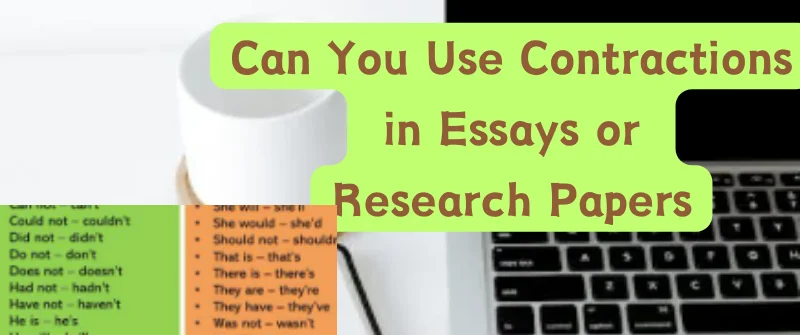Acceptable Turnitin Similarity Percentage: Good or Bad score
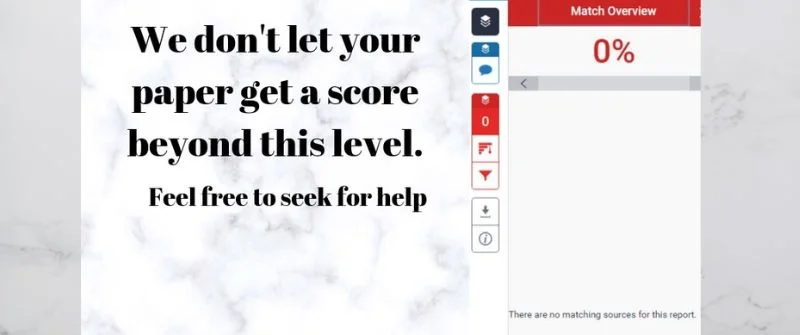
The question of acceptable Turnitin similarity and how much percentage is too much arises when your paper contains copied content. Any student needs to know the best Turnitin similarity index, especially when you want to avoid any issues with your professor.
First and foremost, let us know what Turnitin is. It is an online tool used for checking plagiarism in submitted documents and displays what percentage of plagiarism your assignment has. All this is processed and presented as a report with percentages.
This is really where our focus question arises from. In this post, we delve into this issue in detail.
The Acceptable Percentage for Turnitin
The widely acceptable Turnitin percentage is 15% and below. However, there is no universally specified similarity score because plagiarism policies vary with institutions. Some universities accept Turnitin scores of 10%, others entertain as high as 45% if the sources are well cited.
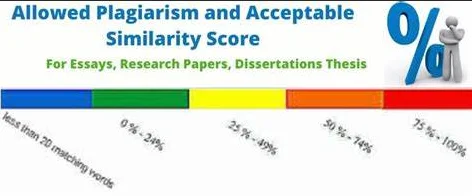
No matter the accepted score, anything above 20% is just too much plagiarism and shows a lot of copying.
Turnitin has no acceptable plagiarism percentage; however, this could vary with your university’s guidelines. If your university’s guidelines and assessment file states 100% original, it must be 100% original — no buts or ifs.
In case the plagiarism report reads above 10% similarity. Your paper will get grades with negative scores for plagiarism if your school’s acceptable percentage for Turnitin is 10%.
However, if your professor permits a range of 5% plagiarism against the norms of the university, then you will be fine with your assignment.
What contributes to Acceptable Turnitin Score
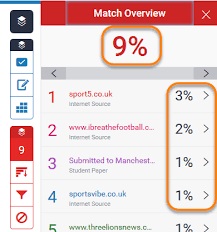
For very strict institutions, a single plagiarized sentence will result in being charged with violating the academic integrity policy of your school.
The percentage rating given by Turnitin is simply a guide for the score of similar content copied from other sources.
It enables the professors to determine how much of the student’s work is original.
However, a custom essay with a low percentage of plagiarism on a paper is still unacceptable, and an essay with a high percentage could be Ok.
This is determined if the high percentage is a result of the wrong settings of Turnitin in such a way that properly quoted material is flagged as plagiarized mistakenly.
References also contribute to a good and acceptable similarity score. It is worth noting that the Turnitin percentage is always 0 when no external sources are used as references.
However, whenever you use sources, you will always have a low similarity score of either 5% or less than 10% utmost. A 0% score is not healthy for a research paper because it indicates that no sources were used to back up the arguments/points/findings presented
Acceptable Turnitin Similarity varies with Universities
The acceptable plagiarism score varies from university to university because of the differences in the plagiarism policies they use to administer their testing procedures.
Some universities are more strict than others because they adopt different citation and referencing rules.
This is because determining the acceptable similarity index is the role of examiners or supervisors and the institutions’ prerogative. They decide if or if not, the presented document is plagiarized and how much plagiarism is committed.
The reason is that Turnitin highlights all the matching materials in a paper. Just like SafeAssign, Turnitin flags off all matching content. However, you can cheat Turnitin and SafeAssign by cleverly uploading your task or paraphrasing content to avoid a plagiarism score.
Why a Little Plagiarism is Good
A little plagiarism is good because it indicates that a paper is well-researched and contains external information from other writers and sources.
It is impossible to write a paper with external sources and fail to have a few matching tests to give low scores on the scanner.
A plagiarism similarity percentage between 1% and 10 is a good similarity score for any assignment. This is because it shows you did some research and incorporated external sources in your academic writing while avoiding copying the work directly.
Therefore, we encourage writers to use external sources to back up their arguments, which is why good quality and well-researched papers will always have some low plagiarism.

For this reason, some scholars argue that little plagiarism is healthy. However, if plagiarism goes beyond 25, it is bad and should be corrected.
While some educational institutions allow up to 40% for well-referenced papers, we do not allow anything above 15% as a precaution.
We only allow anything higher in cases where it is unavoidable.
The cases of unavoidable plagiarism include the names of books, government bodies, and organizations.
When such are repeated many times in a paper, the paper can show a high score of plagiarism yet no copy-pasting was done.
What Turnitin Similarity is too much?
The Turnitin similarity of 20% and above is too much because it illustrates that a fifth of your paper’s content was copied and not original.
However, this varies with universities due to different referencing and citation guidelines. But with no universally specified similarity score, the widely acceptable Turnitin percentage is less than 10%
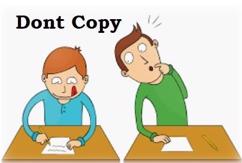
For example, a doctorate original dissertation reference should be less than 10% to consider the literature review in which direct quotes that are quoted properly from an expert’s subject matter will most likely occur.
However, in the case of a dissertation, you will be requested to synthesize material, after which you generate your information so that the content is primarily original.
On the other hand, a master’s thesis can be allowed up to 20% since the larger part of the paper is heavily dependent on existing authorities.
If you take an example of an essay like literature, a plagiarism score of 5 % and below would be acceptable.
When writing a publication manuscript, there should be a very small amount of plagiarism, like 5-7%, apart from the few quotations with proper citations. However, it should be noted that all is not about a low score.
Bad Turnitin Similarity Score
A Turnitin similarity score is considered bad if it is beyond 30% on the originality report and the matching content is not cited and referenced. While the exact bad score varies with different universities, anything beyond 49 is generally considered unacceptable since it shows that you copied too much from the internet or other sources.
The Turnitin score tells how much you have copied. If you have a report you deem bad, you must remove the plagiarism. Supposing you are writing an essay, a term paper, a research paper, a thesis, or a report, you can apply two ways in which to reduce the plagiarism score;
- One is paraphrasing the source content; however, this approach could omit some important details since you are trying to avoid plagiarism. You need to paraphrase well and retain the points.
- Two is by summarizing in your own words the source material; this will make your professor happy since you understood the source and wrote the paper in your own words; hence you will have 0% plagiarism because summarizing is all your own words.
Let your paper be written by a Team.
A team puts checks to avoid plagiarism, ensures quality work and guarantees ORIGINAL papers
Causes of High Turnitin Similarity Score
Turnitin highlights the similarities of your content to other sources; it doesn’t determine if your paper is plagiarized; that is the assessor’s prerogative.
The assessor determines if the similar text is attributed accurately and quoted correctly. The context is very important; however, Turnitin doesn’t account for context.
In many cases, a high similarity index is usually due to either or a combination of the following:
1. Not Crediting the Source
You are copying every word from some other source without including the original words inside the quotation marks and including a citation about the source of the original text.
Although you put the ideas from a particular source in your own words, you have to credit the source.
2. Paraphrasing too Closely, Although you Credit the Source
You can’t take ideas from some other text, even if you put them into your words, and fail to cite the source. However, there is another kind of plagiarism when you paraphrase someone else’s work.
When you put ideas and words in a different order from the original text and mix your original words, you will still plagiarize, although you cite the source.
3. Using Statistics without Crediting the Source
Statistics, charts, or tables inside a text are the property of whoever created them. And from this fact, you must credit the original creator in your text.
There is an oratorical advantage when you cite the source because an author has reached statistics that support your claims in your paper, strengthening your argument.
4. Using uncited Images
The practice is similar to identifying a figure or a table. If you take someone else’s photograph and place it in your text, and write a description, to make it apply to your paper and show a point you will be arguing without acknowledging the source is plagiarism.
Even when you have taken a photograph, it is advisable to cite yourself since you are the creator, and the source will be clear to all readers.
5. Copying or Buying Someone else’s Paper
It is obvious that hiring someone to write your essay is plagiarism, and copying someone else’s work is equally bad. This raises the safety issue when buying essays or from someone else. This can also happen by contracting essay-writing services to do your assignment
Copying some parts of a paper or the whole paper from old lab reports or old papers essay bank is a good example of this type of plagiarism.
6. Padding a reference list or bibliography to show that you have researched when you haven’t
Academic misconduct that mostly happens when students don’t complete their assignments and leave them till the last moment, especially when their professors have requested that they include various articles and books in their reference list.
If you face this problem, you can easily learn to put your paper in APA for free or ask our editors for some help.
How to Reduce Turnitin Similarity from High to Low
In most cases, it’s impossible to reduce plagiarism alerts on Turnitin. However, you can decrease it by following these steps to make sure your essay is free of plagiarism:
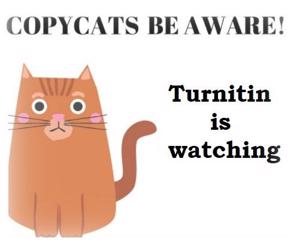
1. Paraphrase your Content
If you have found information that suits your research paper, read and understand it, then put it in your own words.
Ensure you do not write the above two words consecutively from the text you found.
In case you write the above four words in a row, it is advisable to use quotation marks.
2. Cite your Sources
Citing is the most effective way to avoid plagiarism. Follow the formatting guidelines of the document, such as MLA, APA, or Chicago, used by your college. Citing a quote is different from citing paraphrased material.
This practice involves adding a page number or adding a paragraph number when writing web content. To ensure a better score, get someone to format the paper for you if you do not know these referencing styles,
3. Properly use Quotation Marks
You must use quotation marks when you write a quote exactly as it appears from the source. No one likes to be misquoted. A scholar must be able to paraphrase most material effectively.
The process takes time, but the efforts are rewarding. Quoting should be done well to be free of plagiarism allegations.
4. Referencing your sources
The most effective way to avoid plagiarism is by adding a page of cited works or reference pages at the end of a research paper.
Also the page should also meet the formatting guidelines of referencing used by your college.
The Difference between Similarity and Plagiarism
There is a difference between similarity and plagiarism. The teacher defines plagiarism as making a judgment that someone copied. Similarity, on the other hand, is the matching of content with another, as shown by the scanner’s report
Scanners like Turnitin and SafeAssign cannot scan for plagiarism; they only scan for similarity. It is from the similarity report that a professor can judge whether there is plagiarism or not.
Those two are different, and a similarity score does not imply plagiarism. Sometimes, you can get a false positive, where Turnitin says you plagiarized but didn’t, which needs the intervention of your teacher.
In most cases, some systems can have errors occasionally and scan the references. If the match is on the references, that is not considered plagiarism.
Final Take: Avoid Plagiarism at all cost
Turnitin is a plagiarism detection tool that detects the plagiarized content in your paper. It is always advisable for students to stay away from plagiarism by following the steps given in this write-up.
To avoid issues with your instructor, it is important that you know the acceptable percentage for Turnitin. This will help you know how much plagiarism is allowed for your essay in your institution.
However, if you are not confident that you will write an original paper, you can contact us to help with your essay and guarantee an original paper. NO PLAGIARISM HERE.
Score Higher! Make an order Today!
Do not let the burden of too much assignments stress you. Let our team of professionals help you.
FAQs on Acceptable Plagiarism Percentage
What does it mean when Turnitin says 0 similarity?
A Turnitin similarity of 0% means that you did not copy anything from online sources word for word or directly. While it shows your work is original, it may also indicate your prowess in paraphrasing.
You might have copied but paraphrased to cheat Turnitin. As it is recommended by academic writing experts, it is ideal to have a 0% plagiarized paper if you want to score higher. However,
Is a little plagiarism good? If so, why and how little is too little?
A little plagiarism is good because it shows you included ideas and arguments from other writers or credible sources. A 0 score may indicate a lack of resourced content since a little plagiarism shows that you researched well.
However, it should be noted that what is liked is a little plagiarism but not a lot. Anything less than 5-10% is good if well referenced and cited using the right referencing formats like APA, MLA, and Chicago. A little is good but not too much.
How do I remove similarity from Turnitin?
Ideally, the best way to remove similarity from the Turnitin score for your paper is to rewrite the affected content. You can read and understand the content, then write from your mind.
The other best way is to paraphrase the affected areas. Be sure to cite and reference the sources of your content properly.
Does Turnitin count References
Ideally, Turnitin does not count references because they are not part of the main content of a paper or an essay. However, this depends on your faculty/university’s settings for the plagiarism scanning system. In most cases, most universities do not allow the scanning of references. Therefore, this should not be a worry for you.
Either way, references should not worry you because they are good for a paper and do not constitute plagiarism. In reality, references do not comprise the plagiarism report, even if scanned and highlighted for matching.
Watch this video to learn more about this.

Jessica Kasen is experienced in academic writing and academic assistance. She is well versed in academia and has a master’s degree in education. Kasen consults with us in helping students improve their grades. She also oversights the quality of work done by our writers.



